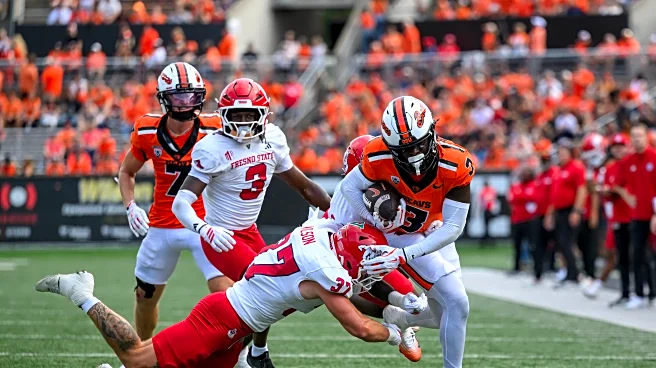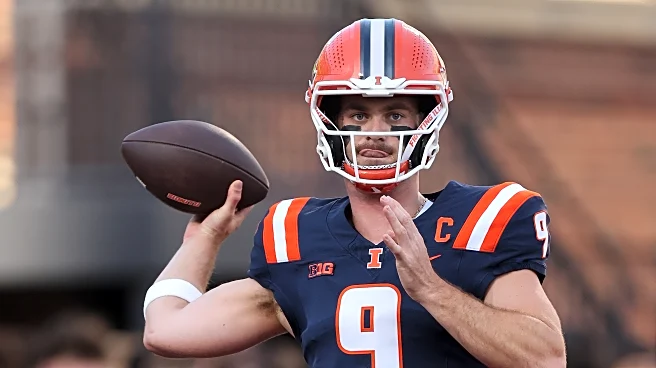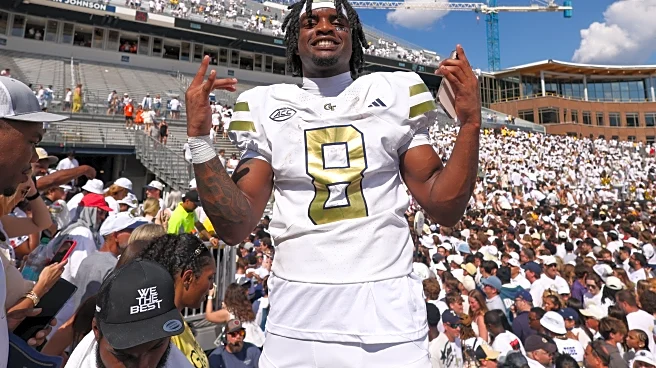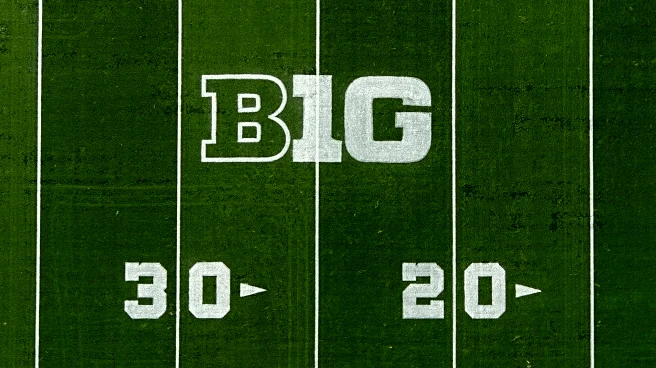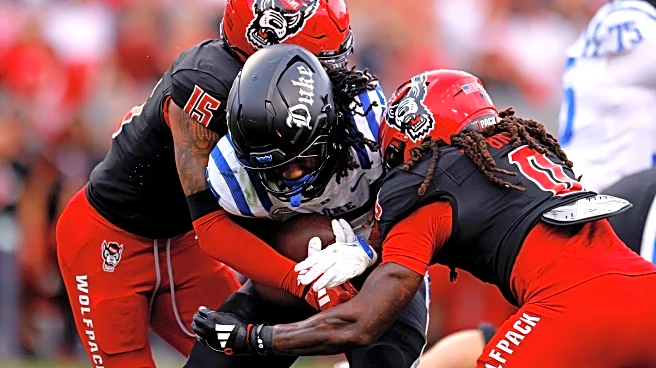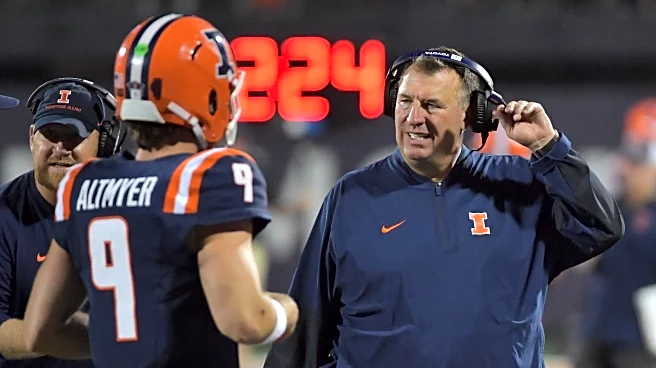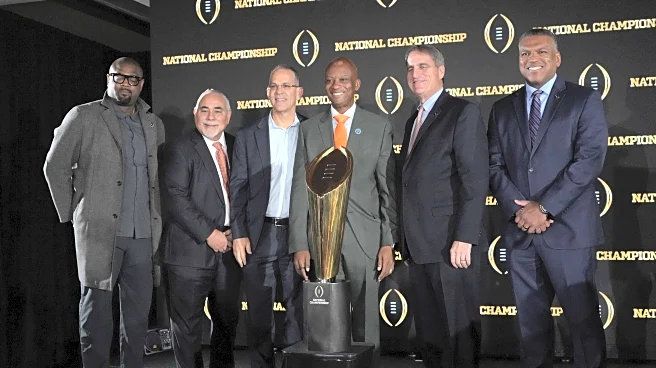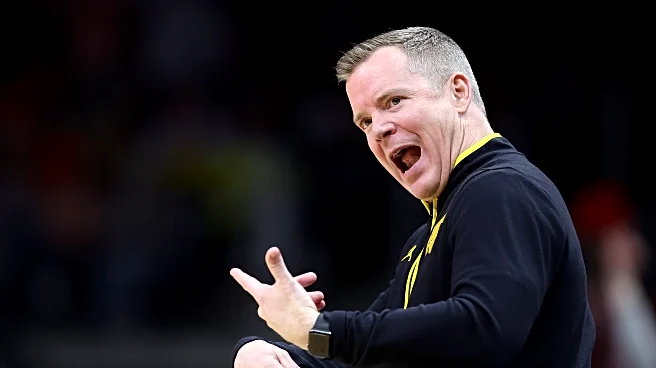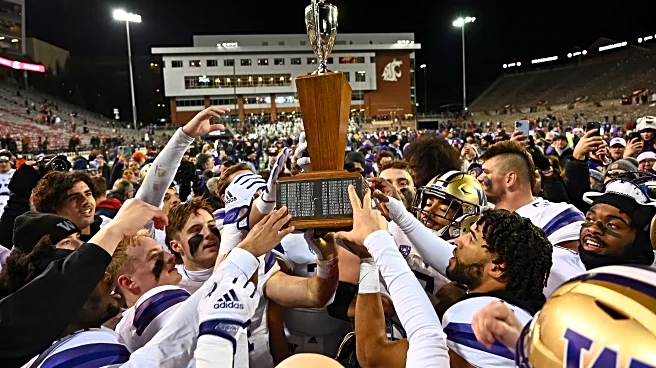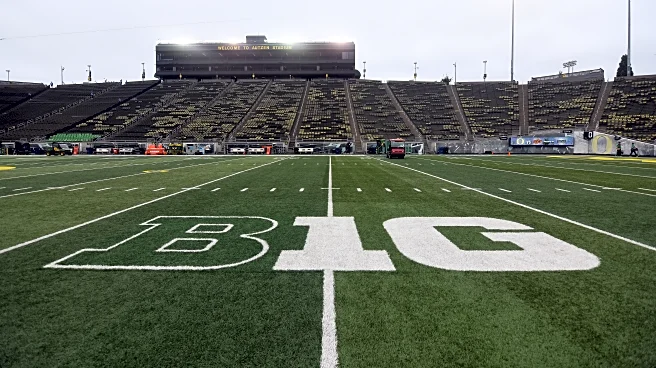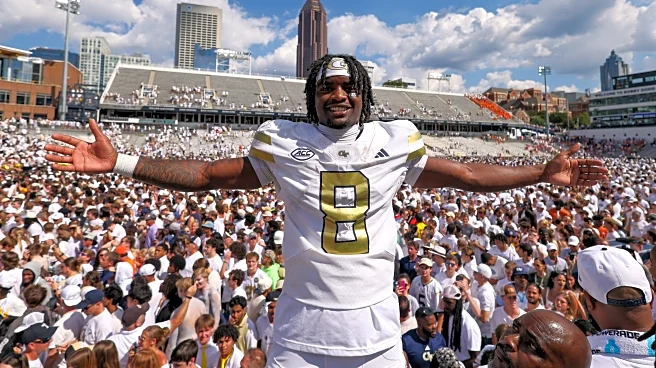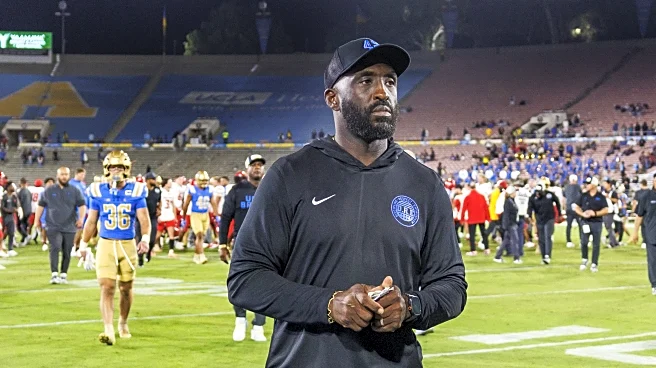Special thanks to Matt Bagley of the State of the Beavs podcast and Sports Illustrated for joining me to discuss Oregon State’s roster on this week’s podcast:
Nota bene: After talking with Matt I believe we have a good handle on which of the Beavers’ players are likely to appear on Saturday, which would be available reserves, and which will be out. Usually I focus selected film clips for previews only on the likely players in the coming game, but — as Matt and I also discussed — due to the extraordinary
difficulties in getting accurate availability reports from the Oregon State program as well as what appears to be an active disinformation campaign in the officially released two-deep each week, there are a couple of significant players for whom there’s a chance of an unexpected return. So as a precaution this week also I’ve included a few clips of these players, and noted them as such.
However, I’m unable to address the issue at the longsnapper that arguably cost the Beavs a win in their week 2 game against Fresno State as we have no word on the timeline for return of the starter. In week 3 against Texas Tech they successfully kicked two PATs in garbage time and missed a long field goal during meaningful time, though the snap was acceptable, using the same backup longsnapper who was having problems the week prior. On punts in week 3 they used an unusual solution – the starting center delivered the ball to the punter who lined up at about half of the normal 15-yard depth and with a modified shield, and the starting quarterback pooch punted a couple times.
Offense

Oregon State has undergone a major change in offensive style in 2025 for the first time in five years. Matt and I remarked on last year’s podcast how peculiar it was — given that almost everyone on the offensive coaching staff and player roster was new in 2024 including OC Gunderson who’d come over from UCLA — to see the Beavs that season still running an offense that was identical in every way that I can measure playcalling tendencies to the one the previous staff had used since 2020. But now, one year later, Gunderson has installed a much more pass-heavy scheme – going from a 45/55 run-pass split overall with a run skew of over 60% on 1st downs in the five years 2020-24, to the total reverse of that at a 35/65 run-pass split and only rushing 43% of the time on 1st downs so far in 2025.
Implementing the new offense has been something of a challenge. There are several interrelated issues which make teasing apart causality difficult, but with Matt’s help here’s my best guess for the timeline: I suspect that head coach Bray decided to retain the old offense in 2024 because there was too much roster depletion at critical spots to make more of a change, and they had brought back a couple of good running backs plus several offensive linemen who’d been trained up by perhaps the best working position coach in the country, former OL coach Jim Michalczik. In 2025, the balance was different – those linemen and one of the backs had left, but they’d gotten more receiver talent coming online and acquired the services of Duke’s all-time leading touchdown passer through the transfer portal through a big NIL deal.
I think Gunderson was going to lean into more of a passing offense regardless in 2025, but three things have happened to accelerate matters, in this order: first, a week before the season started projected starter mid 4-star #4 WR Clemons tore his Achilles, second, starter #6 QB Murphy turned out to be a strong-armed but highly inaccurate passer, and third, midway through week 1 starter #69 LT Strand was injured which has resulted in constantly shuffling the offensive line in a fruitless search for any effective blocking solution.
The upshot of these things — as well as some other personnel choices for which I have some criticism that Matt and I discussed on the podcast — is that the Beavs’ offense so far in 2025 has been very limited: the run game is ineffective in all but short-yardage, they’re mostly forced into short efficiency throws that the QB can complete to crawl down the field, with an occasional shot play against coverage busts as the receiver has to be totally wide open for the QB to hit him.
In a philosophical sense, the main issue that Oregon State has had for years remains unchanged — they do well when they stay ahead of the chains, and fall apart when they fall behind the chains — and it’s only the fact that they’re passing instead of running on early downs that’s different. Murphy’s throwing motion is the main culprit here, his size allows him to put a lot of force on the ball from arm strength alone and he can hit a short, flat-arc throw but even a cursory look at his footwork and mechanics shows why he’s so inaccurate even from a clean pocket and catastrophic under pressure.
The Beavs have a couple of quality receivers to work with, #7 WR Walker who was immediately obvious as the only capable target last year, and inside receiver #3 WR Reddicks who had very promising per-target numbers last year but wasn’t targeted enough and Gunderson has made a real effort to fix that in 2025. Unfortunately the injury to Clemons has hurt the talent profile; he’s been replaced at the other starting outside spot by #1 WR D. Wells, who’s a mid 3-star and a couple inches shorter, with far worse per-target numbers than Clemons had in limited action last year. As Matt and I discussed, this doesn’t really look like Wells’ fault, it’s more that Murphy can’t hit the routes that Wells is asked to run so Clemons probably would have had poor numbers too, but his extra size and talent wouldn’t have hurt.
The disparity between how effective Walker and Reddicks are — or more accurately, the types of routes that those two run in this offense with Murphy’s ability to execute them — compared to every other potential pass catcher and their routes is one of the starkest I’ve ever seen on a football team. With a split in effectiveness this bad, the top two should be getting all of the targets, not half of them, because the half going to everyone else are effectively wasted and are the reason the passing offense overall is far below average:

Here’s a representative sample of what those look like:
(Reminder – you can use the button in the lower right corner to control playback speed)
- :00 – This is Wells down the sideline but Randy Moss couldn’t have caught this ball, the CB has downfield position so all of his contact is legal and it’s airmailed by the QB. There’s no pressure getting to Murphy but his throwing motion is nonetheless rushed and entirely responsible for the inaccuracy – his hips aren’t pointed into it, he’s not planting and driving onto his left leg, and he’s over-rotating his shoulders to whip his upper body.
- :07 – Here pressure is coming as one of the backup LTs is getting crushed back into Murphy’s plant space. He should be stepping up into the pocket to avoid it and buy some more time, but he’s locked onto a bad route and rushes an awkward throw instead to the sole receiving tight end #8 TE Caufield, who can’t bring it in against coverage. The pattern as designed is meant for the QB to read the safeties, who in this case have both been pulled inside, so the throw should be to the RB or the Z going to the pylons as they’ve outleveraged the corners in single coverage.
- :14 – Wells again, part of the reason I don’t really think his poor numbers are his fault, he’s got the corner cooked for a sure TD. But the right side of the line can’t keep the QB clean even on a half-roll to the left, and the close-up replay gives us a very clear angle of the most distinctive throwing motion I’ve seen since Taylor Martinez.
- :33 – Look, Murphy shouldn’t throw this, but when the offensive line is literally blocking air across the board I stop blaming him and start worrying about him.
Situationally, this creates the expected outcomes for the passing game – they’re exactly 50/50 in success rate on 1st down as they’re splitting passes between the top two and everybody else, while on 2nd or 3rd & long when the pressure is up the success rate collapses to under 30% and 20% respectively. Where the offense is successful at moving the ball is at closer range, where they’re a perfect 12 for 12 in short yardage during meaningful play so far, and 7 for 10 on 3rd & medium as well. This is when quick throws and the screen game takes over and the Beavs have been very good … Matt suggested that bringing back longtime coach Langsdorf as an off-field assistant has been helpful here.
Some examples:
- :00 – Well executed RPO screen, on which the Cal OLB takes the bait obligingly and the fieldside ILB doesn’t fill in on Walker in motion. Good block by Reddicks and some nice running by Walker gets the 1st down, though Wells losing his block means Walker can’t get to the sideline for any more.
- :08 – The DB on the hashes makes a mistake here, he should be getting outside leverage and allowing the LB to contain Reddicks’ possible cutback, so Caufield going outside of him and throwing an awkward-looking block was actually him getting where he was supposed to be. Reddicks figures it out quickly and dips around him, then survives the LB and safety’s hits for a 1st down.
- :24 – I think this was intended to be a shot play to Wells as the pre-snap motion had the intended effect on the DBs (more on why in a moment), but the immediate collapse of the line speeds up Murphy’s clock too much so he dumps it off to Walker, who’s clear for the same reason. Murphy’s advantage is that his size and strength let him connect at this range even from the opposite hash while he’s getting hit.
What’s most intriguing to me and I plan to keep a close watch for going forward (I will continue acquiring Oregon State’s 2025 tape for background purposes despite the pause in the rivalry next season, and in anticipation that Matt’s prediction of a Saturday surprise announcement comes true) is that coverage busts from Oregon State’s three opponents this year have been happening at an elevated rate compared to FBS norms in general and when I’ve watched those particular teams in the recent past. The pattern I’ve noticed is pre-snap motions from the Beavs — in fact motion is something of a tell that they’re trying to engineer a shot, as they don’t really use it on any other play — which effectively pull defensive backs out of structure.
This is different from finding a soft spot in coverage or putting a player in tension, it’s actively confusing a defensive player into taking the wrong spot within his own system. Busts happens naturally in any given game, of course, but seeing it this regularly, from these defenses, and with this tell makes me suspect it’s offensive design, and in response to Murphy’s need for wide-open receivers so they can make adjustments on his inaccurate downfield throws.
Some examples:
- :00 – This was the third coverage bust by Cal and it was only the fourth OSU possession. Here the safeties fail to spin up / spin down in response to the motion from the boundary into the field so the defense is misaligned. The corner stays on the X, and the nickel makes a switch call that no one is around to receive, so when he takes the motion man nobody picks up Walker on the fade. Note that even with a clear read of the bust, Murphy is late on the throw with poor footwork and open hips, so Walker has to make a big adjustment on the ball, double-catching it … impossible if he weren’t wide open.
- :30 – Here it’s Reddicks’ in-out motion pre-snap that does it; Fresno’s DBs didn’t communicate clearly who was going to keep deep leverage when he crossed back and forth behind Wells and the boundary safety wound up covering empty grass. Again, look at Murphy’s failure to point his hips and step into his throw despite not a hint of pressure – he’s just pushing the ball from the 5 to the 35 on his arm alone, and while that is an impressive amount of muscle he really should be placing this on the 38 so that Reddicks can catch it in stride to outrace the safety’s angle.
- :57 – I don’t think this is an engineered coverage bust, it’s a counterpoint to the third clip of the above compilation – a natural bust (the safety should have his eyes in the backfield in zone, as soon as the back goes out the CB has to cover him so the safety must collapse on the Z, not stand around woolgathering) that the offense takes advantage of to hit one of its rare bigger plays. Again the pattern is the same, a poor throwing motion and an unnecessarily high throw, but the receiver has the time and space to adjust on it because nobody’s close to him.
The run game has completely collapsed – compared to last year they’re down ten percentage points in efficiency, eight points in explosiveness, and over a yard and a half gained per carry. This looks to me like it’s simply that the offensive line has lost effectiveness, as they returned their primary ballcarrier from last year, #0 RB Hankerson, and are giving him the same number of meaningful carries per game, 16, but his per-carry numbers have fallen off.
Of course, at this point Hankerson’s numbers in 2025 are basically synonymous with the run game as a whole. Last year they were distributing the ball to several backs, but this year they’re running less overall and giving it to Hankerson the same amount, so there are now very few carries for anyone else. On the podcast, I mentioned that I suspect that’s a mistake because this year’s RB2 (last year’s RB3) #26 RB Allah is now grading out better than Hankerson on a per-carry basis and has always performed better as a target out of the backfield, and as a bigger back is a better candidate for pass-pro, but that this is a hard case to make since Allah only has one-sixth of the touches Hankerson does so I’m hitting sample size problems.
It would exceed any sane space limitations to recount the full offensive line dilemma as they’ve had the only reliable tackle getting hurt 52 snaps into the season, nine different permutations of the lineup in three games including trying a guard out at tackle, four transfers into the program at which it appears they’ve whiffed on every one defying the laws of probability, and a starting-caliber guard out with injury for going on two seasons who Matt was told by his coach and the player himself up until opening day would be good to go and we still haven’t seen. The podcast has the rundown as well as select commentary on the management of the line.
In the absence of Strand at left tackle, we’ve seen #74 OT Anderson and #71 OT Timoteo play in that spot, both from the 2023 cycle though Timoteo transferred in from Nevada. Both are ineffective pass blockers. On the right side, they started out with #73 RT Morano, an underweight senior who I don’t think they were real happy with (Matt intimated that the reason they got Timoteo was to replace him, but Morano still wound up winning the job in Fall camp). They had three playable guards to start out with (and might have had a fourth, #79 OG Voltin, but we haven’t seen him since week 2 of 2024 and he’s the one Matt felt the program has been less than candid about), with #56 LG Sikorski starting on the left, #78 RG Elu starting on the right, and #64 OG Berger as the sixth man rotating through in what looked like a plan until Strand’s injury caused the shuffling to start. One of the solutions involved pulling Morano and putting Elu at RT with Berger taking over at Elu’s guard spot.
The one untouched position has been the center, #55 C V. Wells, who I think has been a relative bright spot since I’ve been very critical of him since his days at Colorado and even through last year at OSU when he was rotating with Luka Vincic, but he looks like he’s turned a corner in 2025 and is grading out better than anyone else. Wells has the only position I’m sure of for Saturday; they have three healthy guys who’ve played exclusively at tackle, three who’ve played guard, one of those six has played both, plus one tackle and one guard each of whom would probably start if they were available and for all anybody knows could show up on Saturday, though neither have played in a while. What I am reasonably certain of is that the line performance will continue to come in at about 30% error rates cumulatively for the run and the pass, as if there were some effective combination of starters they would have found it by now.
Here’s a representative sample of unsuccessful rushes:
- :00 – This game’s play-by-commentator had Cal again in week 3 and recalled this as a “bullying” by the Golden Bears, which I thought was remarkable both because he’s a fairly straight-laced fellow and because I don’t think I’ve ever heard that term used to describe Cal students before. Accurate, though.
- :07 – Wrong read, Murphy should have kept it. I have this down on my tally sheet often enough that he’s either under instruction not to run the ball or he’s having a hard time in read-option game. Though this looks like it has a pass tag to Walker on the back end and the blocks are leveraged well for it, and we know he’s executed that before, so I really don’t understand the malfunction.
- :12 – This stretch run went nowhere all day, nobody on the line gets their hats playside and the back just keeps running hoping for a hole which never opens.
- :20 – Nice overhead replay here showing the problem – the TEs coming under the formation do their jobs and the backside blocks are fine (they even do a little exchange without issue), but the frontside is a mess. The LT has to get the inside shoulder of the end and he’s beat immediately despite starting with and advantage and the LG to help him … and the LG isn’t helping anybody, not the LT, or the C, or the back by climbing the 2nd level and hitting the backer.
Here are some examples of areas where the run game has found success:
- :00 – It helps on this one that the DT makes a really, really wrong guess so all the line has to block is the end and two backers, but they get that done, nice pulls by Wells and Strand.
- :19 – This should have been stopped for three yards on pretty poor blocks by Morano and #88 TE R. Williams (the blocking TE for the first two weeks, though he was absent last week and #82 TE Milbourn played that role), but Hankerson shows off why the staff has trusted him so much for the last two years – he keeps churning to pick up four more yards pushing the pile.
- :27 – Here the defense sends a bunch of extra defenders around the edges and only has one backer in the middle, Hankerson is patient enough to read him and just go where he’s not. Nice job by Wells to combo with the RG then come off it to hit that backer and open the hole for the back, and now there’s a bunch of grass open because all the extra defenders are in the backfield.
- :35 – I’m pretty sure from the angles this is drawn up as a run to the right and Murphy gets his turn wrong, but Allah handles it and the RG getting destroyed pretty well, shrugging off contact twice and picking up six yards on 2nd & 9.
Defense

In addition to being the head coach, Bray has resumed his post as defensive coordinator in 2025 since last year’s DC, Keith Heyward, has gone back to being a DB coach for Cal. When Bray, a former linebacker for the Beavs himself under Mike Riley, last took over as DC for Oregon State in November of 2021, it was a promotion from LB coach under Tim Tibesar who’d just gotten fired. The team had been running a 3-4 defense for years which, just like several other odd-surface teams in the Pac-12, they just never executed very well because they couldn’t recruit enough giant interior linemen to hold the point of attack. Bray’s solution, which they’ve stuck with ever since, was to give up on getting a big nose tackle altogether and reconfigure it to a more-or-less full time 2-4-5 with diversified roles for different types of edges (stand-up and fist-down ends, situational OLBs) and more flexible ILB use.
Each time Bray has taken over a job at Oregon State — in 2018 when he returned from Nebraska to be the Beavs’ LB coach, the 2021 promotion, and now the first three games of 2025 — I’ve noticed the defense playing smarter on film. The structural change to the front was pragmatic, and I see the defense reading motions and flowing to plays, as well as substituting in more sophisticated and less robotic ways, better than his predecessors’ defenses.
I suspect that Bray would still like to have a 3-4 package for run-stopping against heavy offensive personnel and in 2025 we’ve seen them test out what looks like a much better depth situation along the interior defensive line than OSU has had in a while. I’ve seen six different linemen I’d describe as defensive tackles during meaningful play, of whom two are big enough to creditably play nose in a 3-down structure. The most consistent, and biggest, is senior #62 DT Schuster who’d transferred in from Minnesota a couple years ago. Next to him has been a rotation of #98 DT Collins (who’s been getting some much better penetration than when I watched him last year, despite being a bit undersized at 6’1” and 280 lbs) and #90 DT Jojo Johnson. All three are returners from the regular rotation last year.
They’ve also added #95 DT Hill, who came over from LSU but didn’t play last year, and #15 DT Mullix, who transferred from the FCS this cycle, to the rotation in the second line, while only losing one, Semisi Saluni, so depth has been a net increase. The sixth tackle is #59 DT Pome’e who’d joined last year from Oregon and was part of the 2024 OSU rotation but not really in a nose role. In 2025 I think the hope was that Pome’e had developed physically enough and was ready to be their nose for the 3-4 packages, but from watching tape this just hasn’t happened. He’s getting eaten alive when trying to two-gap and can’t hold a double team if he goes in elsewhere on the line, and his per-game reps are down significantly in favor of Hill and Mullix.
It appears that the Beavs this year only have one available player I would describe as a defensive end, which is the third fist-down lineman in for 3-4 packages, and will also play opposite an OLB in the heavy version of the 2-4-5 to set the edge. That player is #44 DE Hickle, a redshirt junior who missed last year and played sparingly in 2023. I think they’ve been hoping to have bluechip #58 DE K. Howard play this spot since he signed in the 2023 cycle, but this is the third year without him seeing the field at all and I’m starting to doubt it’ll ever happen.
The havoc in this defensive structure would come from the outside linebackers, and that’s been the problem for all of 2024 (Matt shared that the distress among his colleagues is that the Beavs ranked last in the FBS in some of the constituent raw stats last year). In 2025 I thought they might have made some progress as the tight end convert #88 OLB Alfieri was coming on well towards the end of last year as he was learning the position and they’d gotten #18 OLB Wallin from Nebraska who was looking good for the first two weeks of the season. But Alfieri has been nowhere to be seen this year and Wallin missed last week, and Matt said there’s no word as to what’s going on with either. So far what we’ve seen has been primarily senior #25 OLB Taylor, a backup from last year who’s producing havoc stats at a fraction of the rate that he needs to for the reps he’s getting, #13 OLB Meikle who was a starter last year but seemed to have been demoted behind Wallin when the transfer came in, and #10 OLB Saez who has not generated any havoc stats of any kind in two years on my tally sheet.
We’ve only seen two inside linebackers during meaningful play, with the two guys who are evidently backups only appearing late during garbage time. Those two are #7 ILB Foster, a returner from last year, and #9 ILB Davis, a transfer from USC. Last year, both of the starters Isaiah Chisom and Melvin Jordan only played partial seasons and transferred out, so Foster, who was a true freshman at the time, then another backup, Juco #2 ILB Sullivan, took over as starters for the rest of the year. So in a sense, Foster returns as starter, while Davis has replaced Sullivan as starter. It’s been interesting to watch them on film, because I think they’re playing better than in the past — Foster because he’s no longer a freshman, Davis because he has a real coach instead of the rotation of guys who couldn’t get to their next job fast enough which USC employed for most of his career — but Foster still has a long way to go and it might just be too late for Davis as a redshirt senior.
While they haven’t been hit with many explosive rushes (I suspect this is an artifact of the opponents more than the defense, since they have given up several big screen passes), ultimately the run defense is underwater in terms of efficiency, and situationally puts the team behind schedule with only a 38% win rate against the run on 1st down, collapsing farther to 30% in short-yardage situations. The one relative bright spot is that if they do win on 1st down, then they’ve been fairly good against the run on the following 2nd down: 10 wins out of the opponents’ 18 2nd & medium or long rush attempts.
Here’s a representative sample of successfully defended run plays:
- :00 – I don’t really understand what the RT is doing here, his entire assignment is to block Taylor so his eyes should be on and his weight should be square, but avoiding contact entirely with this slick sidestep was how Taylor got penetration last year as well.
- :14 – Here’s one of the new faces, Mullix, already much more effective getting inside the pulls of this gap scheme than Pome’e was last year. Also note Wallin beating the TE trying to pin to help clean up.
- :25 – I recognized this play from my film study of Texas State last year, which is where Texas Tech’s OC Mack Leftwich was at (I knew that staff was going places). Even though they’re in the pistol with a balanced blocking formation, it has a strong fieldside run preference, which Bray seemed to know as well because the front fires that way of the snap while the backside safety is creeping up to get a clean shot before they’ve even snapped it. The odds that Heyward last year would have had this cracked are approximately nil.
- :33 – Here’s another good tendency call from film study by Bray – this fullback trot into the boundary is not setting up a release into the pattern but a boundary run, which the defense re-aligns to handle. Note the everybody getting into position to wrong-arm the pullers, Collins getting great penetration before the blocks can set up, and Hill and Taylor as backstops playing the field in case it’s a sneaky QB boot.
And unsuccessfully defended rushes:
- :00 – Oregon State’s defense has been doing this linebacker trick against read option offenses (I need to think of a name for it) for the better part of a decade – keep an OLB wide to induce the handoff on one side, then send both ILBs in the same gap on the other side … the first will have a blocker assigned to him but the second will be clear to make the tackle. Except man, you need to actually make the tackle.
- :07 – Bray is sticking with a 2-4-5 against heavy personnel on 2nd & 4, which is a different approach than last year. They’ve got enough pass defense resources to prevent a shot play and have two safeties back, so this looks like a strategic choice to me, but Fresno State takes them up on it with nowhere near the beef in the middle to stop a power run and just plows them under for seven yards and a conversion.
- :13 – This is a proper read by the defense, Davis even has the motion clocked and the run direction pointed out for the DBs, but play recognition doesn’t amount to much with technique this poor holding them back: Taylor turns sideways and has his outside arm taken away, Davis is completely swallowed by the downfield block, and despite knowing exactly where the run will be and having advanced jumps on it Foster and the safety take poor angles and both whiff on the back.
- :21 – I think Leftwich got sick of Bray reading his mind and so broke out something I hadn’t seen Texas State run last year – check out the back with a big corny counter step before taking the handoff. That and the TE motion got the LBs all going the wrong way, and Meikle got stuck inside because of course he did, so the only one left to stop this is the nickel, and his breakdown was just way too enthusiastic so he got juked out of his cleats.
On the podcast, Matt bemoaned the defense playing frequent man coverage with inexperienced corners and not much safety help and getting burned for it. He’s right as far as it goes – that does describe the coverage and personnel, and the team is giving up more than 10 adjusted YPA and 27.5% explosive passes per dropback, which are eye-watering numbers. But I think there’s a lot more going on.
First, the pass defense success rate number is 48% – underwater, but actually kind of decent and not nearly as bad as it YPA and explosiveness figures that atrocious would predict. Second, the Beavs have practically no pass rush without blitzing, and the 3rd & short vs long differential is very good, in fact they’re a perfect 11 for 11 on 3rd & long despite shifting from cover-2 to cover-1, while the secondary holds up pretty well in short yardage in terms of efficiency. Third, the main culprits haven’t really been the corners, they’ve been the established players at nickel and safety, which is what the staff was trying to address with their rotated zone package but lost access to when #12 CB Ivy was lost after week 1 to injury (the story of that package, the rotations, replacements, and missing players are all quite complicated, it’s fully recounted on the podcast).
The starting corners are true freshman #19 CB Glasper and #22 CB Tucker, a former Oregon player who dipped to Juco last year. The nickel is #8 DB Vadrawale, who’s asked to do a lot – normally I describe his role as a STAR safety, but he’s not great in coverage, so they’ve converted two different outside corners to rotate with him as inside corners situationally, first Ivy until he got hurt, then #0 CB Singleton who came over from Liberty. Complicating matters is that Vadrawale appears to be their only viable backup outside corner, so when Glasper or Tucker needs a blow, rather than put Singleton in at that spot they leave him inside and move Vadrawale outside, which … if that’s really better than the other way around, means Singleton hasn’t gotten any better since the last time Oregon saw him.
The strong safety is #17 DB S. Thomas, and I don’t think I’ve ever seen him come off the field in meaningful play. At free safety the starter is #6 DB Patterson, but he rotates pretty early with #26 DB H. Howard, and they’re backed up by #1 DB M. White. That’s an interesting re-evaluation since all three were backups to Jack Kane last year, but it seems like Kane lost the job to Patterson in the offseason and hit the portal, and White was the most frequently used of the backups but also got a demotion to the fewest reps this year. However, the core issue I see with the cover-2 man that they’re playing isn’t that there isn’t structural help for the corners on the sidelines — there is, that’s what two-high / MOF open means — it’s that the safeties are playing too far down supporting the linebackers and nickel since they need it so bad, and then those safeties can’t back out fast enough to actually help the corners in coverage.
The upshot is that I think the staff has made the best of a bad situation and the players in the secondary hold up fairly well in obvious passing situations, and Bray fields a pretty effective variety of blitzes. Where they’re vulnerable isn’t so much the bread and butter passes — opponents are better off rushing or employing screens and RPOs to attack the perimeter and exploit the linebackers for methodical drives — but rather shot plays on early downs, using a clean pocket to set up and more athletic targets to simply beat the coverage on extended routes.
Here’s a representative sample of successfully defended passing plays:
- :00 – All four of the 3rd & long incompletions OSU forced against Cal during meaningful play looked very similar to this: a blitz (though a different variation each time) which achieved penetration because a blocker missed somebody, the QB rushing and throwing off his back foot and so the ball was off in some way, and this was necessary for the coverage to get a PBU because otherwise it was probably beat. Here it’s a right side overload (gain depth and observe the stunt, don’t lunge at the bait, RG and RT) allowing Foster through, Tucker is beat on the post without safety help since Thomas is blitzing, but the ball floats due to the backfoot throw which allows Tucker to catch up and get the PBU on the adjustment.
- :21 – Here’s Wallin, again the only OLB I saw generating regular havoc plays through the first two weeks, beating the TE and flushing the QB. Meikle gets the holding flag when the linemen won’t disengage as the QB leaves the pocket; OSU has collected a number of holding flags so far even as their penetration rate wouldn’t predict it, but they’ve all been deserved to my eyes, so they’ve been trained up to show the signs of restriction when it’s happening.
- :31 – This is the kind of pattern and pocket protection scheme which is a poor strategy against Oregon State – expending seven blockers on 1st & 10 when they’re unlikely to blitz and putting only two deep into the pattern against four deep in coverage, while they have a corner and two backers on any short stuff. The Beavs can handle this kind low percentage long play and small potatoes dumpoff just fine.
- :42 – Here’s the other blitz scenario, short yardage in the redzone. Collins swims the RT to get right into the backfield, and Schuster opens this up by beating the center so the backers can get through and finish the QB off into a throwaway. Good thing too because Singleton was smoked.
And unsuccessfully defended passing plays:
- :00 – Davis actually has the wheels to take away the first read this is designed to hit so this goes into a protracted battle. The line’s not getting anything done without blitzing, much less only three, and Taylor loses patience hanging out in the throwing lane and beelines the QB. Ivy and Vadrawale manage to pick each other on the mesh, then Ivy falls down again trying to cover the TE.
- :22 – This is the best play I’ve seen for Hickle, and sadly it was for naught because Davis got caught staring at the QB. He tries to pass off the TE to Foster but nope, Foster has to take the back and Thomas has the QB run lane, the TE is all yours. He belatedly realizes it as he’s giving up a 1st & 15 conversion on the rollout throwback.
- :40 – It’s man coverage with two “high” safeties but that’s the problem, they’re only playing at 10 yards deep. Vadrawale is beat but honestly he’s not playing it that badly, if he got any help whatever — if the pass rush got anything done or Patterson were in the same zip code — he probably would earn the breakup here. Plays like these are why I pushed back on Matt’s suggestion that the problem was just the schematic choice of man-to-man coverage.
- 1:01 – This RPO triple option should look familiar to Oregon fans. The outside and inside backers all fall for it too, attacking the run much too aggressively on 3rd & short, while the DBs are in man. We even get the familiar Moorhead-style WR two-for-one block where the slot carries Tucker then hits Patterson, and then a third element of the play looks familiar as well.
